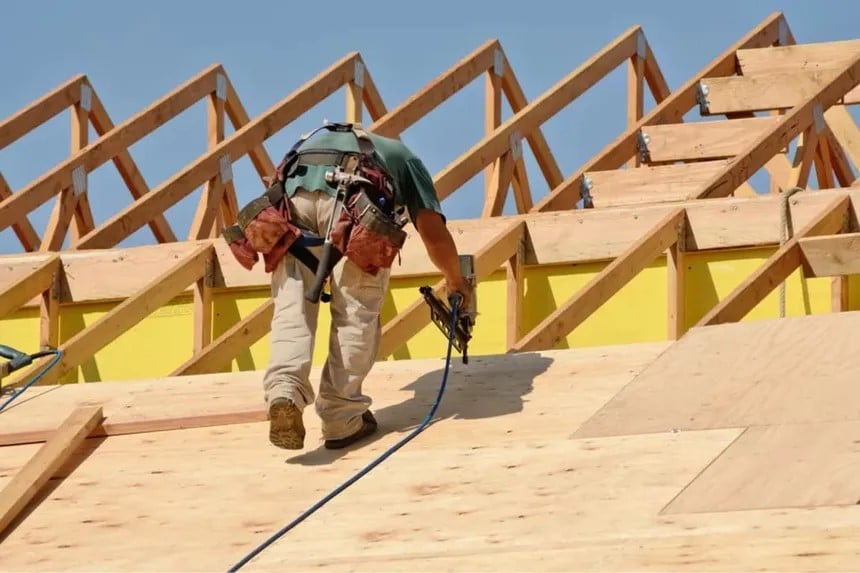
Florida’s notorious hurricane season runs from June through November, and while forecasts can vary, one fact remains: your roof needs to be fortified well before the first storm warning. In weather-vulnerable locations like Jacksonville, where winds from tropical systems often reach damaging speeds, your roof is the first — and often only — line of defense protecting the rest of your home.
Many homeowners assume that if their roof looks intact, it must be storm-ready. But the truth is, hurricane damage often begins with small vulnerabilities such as a loose shingle, an aging seal around a vent, or an improperly fastened deck panel. These weak spots can quickly become entry points for wind and water when conditions turn severe.
At Jack C. Wilson Roofing, we’ve helped Florida families weather decades of storms. Below, we break down the necessary steps you should take before peak hurricane activity sets in, especially if you want to minimize potential damage and avoid emergency repairs after the fact.
Why is it Important to Prepare My Roof Before Hurricane Season?
In Florida, the threat of hurricanes is a common occurrence. From Jacksonville to the Keys, residents experience some of the country’s most intense wind and rain events between summer and early winter. A secure, well-maintained roof is critical as even minor weaknesses can lead to major water intrusion and structural damage when a storm hits.
For example, during Hurricane Irma, widespread roof failures in Northeast Florida led to extensive interior damage, both from water entering through small vulnerabilities and major destruction from unfit roofing systems as a whole. A strong, sealed, and well-inspected roof is essential for avoiding costly insurance claims, preventing mold issues, and protecting your home’s structural integrity, not to mention your peace of mind and comfort.
Should I Reinforce My Roof for Hurricane Protection?
Florida building codes already require many wind-resistant features in new homes, but older homes, specifically those built before 2002, often lack the critical reinforcements necessary to protect and prevent. If your home predates these standards, additional measures are worth considering.
- Hurricane Straps and Clips
These metal connectors, also known as hurricane ties, anchor your roof trusses or rafters directly to wall framing. In areas like Duval and St. Johns counties, where older homes are common, retrofitting with hurricane straps can significantly improve uplift resistance. - Roof Deck Upgrades
The roof deck (usually plywood or OSB) can be strengthened by re-nailing with ring-shank nails at tighter spacing. This is especially important if you’re already replacing shingles or underlayment. - Edge and Ridge Reinforcement
Roof edges and ridge caps are common failure points during high winds. Sealing and securing these areas with code-compliant fasteners helps prevent wind-driven rain from entering your attic.
Is Roof Sealing Necessary Before Hurricane Season?
Yes, sealing protects your roof from water intrusion, which is the most common, and sneakiest form of storm damage in Florida homes. Different aspects of your roof require unique sealing regimens:
- Flashing and Penetrations
Florida roofs often include features like solar panels, vents, skylights, or chimneys, all of which create potential entry points for water. Resealing these areas with roofing-grade sealants reduces your risk. - Underlayment
Consider self-adhering waterproof underlayment products, especially if your current roof is aging. In hurricane-prone regions, this extra layer beneath shingles or tiles offers critical protection if the primary covering fails. - Gutters and Downspouts
Clogged gutters can be detrimental during storms, leading to fascia damage, roof rot, and foundation problems. Ensure all drainage paths are clear and sealed to direct water away from your home.
How Far in Advance Should I Prepare My Roof for Hurricane Season?
Ideally, we recommend homeowners start at least two months before hurricane activity peaks. In Florida, that means getting ahead of the August–October window when tropical storms and hurricanes are most likely to form.
| Timeline Before Peak Season | Jack C. Wilson Roofing Co.’s Recommended Action |
| March–April | Schedule a professional inspection with our team to identify weak spots, especially if your roof is more than 10 years old. |
| May | Complete major preparatory upgrades: replace loose shingles, install hurricane straps, and reinforce decking. |
| June | Reseal flashings, secure gutters, and perform a final check for visible wear or vulnerabilities. |
If you’re preparing closer to the season, prioritize critical tasks like sealing, debris removal, and hurricane ties. Don’t leave those for the week before a storm system is forecasted! If you have more questions about our recommendations, check out our FAQ page.
Florida Roofs Need Florida Solutions
Roof preparation in Florida isn’t one-size-fits-all. Jacksonville roofs face different conditions than those in coastal or inland areas. That’s why we tailor every inspection and repair to your home’s location, age, and roofing material. Jack C. Wilson Roofing has been protecting Florida homes since 1946, with customer happiness as proof of our exceptional service and professionalism.
If you’re unsure about the state of your roof as we head into hurricane season, contact our team to schedule a prep consultation, we’ll make sure your house is ready and secure when the weather turns.

